Stephen Hawking funeral: All you need to know
Professor Stephen Hawking’s funeral arrangements have been announced for Easter Sunday and it was revealed that his ashes will be interred near Sir Issac Newton and Charles Darwin’s grave at Westminster Abbey in London.
Stephen Hawking’s children, Lucy, Robert and Tim, said that the service will be held in Cambridge because it is ‘the city that he loved so much and which loved him. On behalf of our whole family we want to express our huge gratitude for all the wonderful tributes to our father and to those who have sent us messages of condolence.’

+1
Professor Stephen Hawking’s funeral arrangements have been announced for Easter Sunday
The funeral will be a private occasion with just family and friends being invited and other mourners are being asked to congregate outside the University’s church on the day.
Stephen Hawking's death
Professor Hawking died on March 14, 2018, at the age of 76, after a lifetime as one of the world’s most renowned scientists despite his battle with motor neurone disease.
When is Stephen Hawking’s funeral?
Stephen Hawking’s funeral will take place on March 31, 2018, on Easter Sunday, at 2pm. The funeral will be followed by a private reception at Trinity College shortly after, which is located nearby.
A date for the service of thanksgiving that will see his ashes scattered at Westminster Abbey has yet to be announced.
Video playing bottom right..
Where is Stephen Hawking’s funeral?
Stephen Hawking's funeral will be held at Great St Mary’s, the University Church in Cambridge which is very close to Gonville & Caius, the Cambridge College where Professor Hawking was a fellow for over 52 years.
Since his death, thousands of people have visited this college to sign his book of condolence.
The Dean of Westminster, the Very Reverend Dr John Hall, said: ‘It is entirely fitting that the remains of Professor Stephen Hawking are to be buried in the Abbey, near those of distinguished fellow scientists. Sir Isaac Newton was buried in the Abbey in 1727. Charles Darwin was buried beside Isaac Newton in 1882.
‘Other famous scientists are buried or memorialised nearby, the most recent burials being those of atomic physicists Ernest Rutherford in 1937 and Joseph John Thomson in 1940. We believe it to be vital that science and religion work together to seek to answer the great questions of the mystery of life and of the universe.’
Who will Stephen Hawking be buried next to at Westminster Abbey?
Cementing Professor Stephen Hawking's reputation as one of the greatest scientists Britain has ever produced, his ashes will be interred near some of the most esteemed figures in history.
In recognition of his pioneering work in theoretical physics - particularly with black holes - Hawking's ashes will be laid to rest close to Sir Isaac Newton and Charles Darwin in the nave of Westminster Abbey.
He will also be close to memorials or graves belonging to astronomers John and William Herschel, penicillin pioneer Howard Walter Florey, mathematician James Clark Maxwell and genius physicist Michael Faraday.
Below is a list of some of the excellent company Hawking will have in the abbey when he is interred there later this year.
Sir Isaac Newton
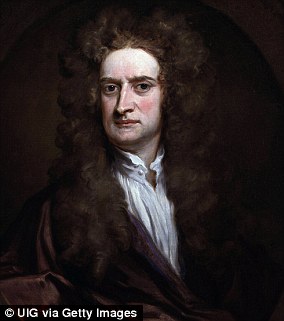
Newton is best known for his law of gravitation, which was set out in his hugely influential book Philosophiæ Naturalis Principia Mathematica
Newton, who was born in Lincolnshire in 1642, was Lucasian Professor at Trinity College Cambridge from 1669 to 1702 (Hawking held the same post from 1979 to 2009).
He is best known for his law of gravitation, which was set out in his hugely influential book Philosophiæ Naturalis Principia Mathematica.
He also made enormous contributions to mathematics, particularly with differential and intergral calculus and binomial theory.
In addition to those developments, he was a major figure in the areas of optics, mechanics and astronomy, and his invention of the reflecting telescope and studies of light put at the very forefront of scientists.
An engraving on his Westminster Abbey monument reads: 'Here is buried Isaac Newton, Knight, who by a strength of mind almost divine, and mathematical principles peculiarly his own, explored the course and figures of the planets, the paths of comets, the tides of the sea, the dissimilarities in rays of light, and, what no other scholar has previously imagined, the properties of the colours thus produced.
'Diligent, sagacious and faithful, in his expositions of nature, antiquity and the holy Scriptures, he vindicated by his philosophy the majesty of God mighty and good, and expressed the simplicity of the Gospel in his manners. Mortals rejoice that there has existed such and so great an ornament of the human race! He was born on 25th December 1642, and died on 20th March 1726'.
Charles Darwin

Darwin, a naturalist born in Shrewsbury in 1809, changed the world forever when he published On the Origin of Species in 1859
Darwin, a naturalist born in Shrewsbury in 1809, changed the world forever when he published On the Origin of Species in 1859.
The book is considered the foundation of evolutionary biology and introduced the theory that organisms evolved over generations through the process of natural selection.
Despite being an agnostic and the propagator of a theory that went on to damage the credibility of religions worldwide, he was buried in Westminster Abbey at the request of many holy men.
During a speech a week after his funeral, the Bishop of Carlisle, Harvey Goodwin, said: 'I think that the interment of the remains of Mr Darwin in Westminster Abbey is in accordance with the judgment of the wisest of his countrymen…
'It would have been unfortunate if anything had occurred to give weight and currency to the foolish notion which some have diligently propagated, but for which Mr Darwin was not responsible, that there is a necessary conflict between a knowledge of Nature and a belief in God…'
Michael Faraday

Albert Einstein greatly admired Faraday (pictured) and kept a painting of him in his study
Faraday was born in 1791 in London.
He contributed enormously to physics, chemistry, the study of electricity, magnetism and the construction of optical glass.
Albert Einstein greatly admired Faraday and kept a painting of the illustrious experimenter in his study.
Faraday's discovery of electromagnetic induction led to electricity being transformed from a curiosity into a usable technology.
He even helped coin words like 'ion', 'electrode' and 'cathode'.
While buried at Highgate Cemetery in North London, a memorial to the great man was installed at Westminster Abbey near Sir Isaac Newton.
The inscription on his memorial reads simply: 'The memorial of Michael Faraday 1791-1867. Buried elsewhere'.
James Clark Maxwell
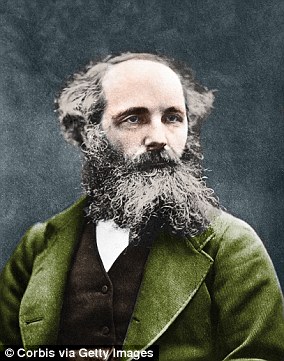
Maxwell, a hugely influential mathematician and physicist, was born in Edinburgh in 1831
Maxwell, a hugely influential mathematician and physicist, was born in Edinburgh in 1831.
Before heading to the University of Cambridge, he submitted a paper to the Royal Society of Edinburgh at the age of 15.
He devoted his life to studying optics, colour vision, Saturn's rings, electromagnetics and thermodynamics.
His work on Saturn's rings determined that the mysterious planet was orbited by individual particles rather than a fixed ring.
When the Voyager space probe passed Saturn in the 1980s, he was proved correct.
After he died in 1879, he was buried in Kirkcudbright in Scotland, but a memorial was erected at Westminster Abbey near Newton.
He is considered second only to Newton in his contributions to mathematics.
Read more: http://www.dailymail.co.uk/news/article-5553477/Stephen-Hawking-funeral-need-know.html#ixzz5B5WHKbYC
Follow us: @MailOnline on Twitter | DailyMail on Facebook
http://www.dailymail.co.uk/news/article-5553477/Stephen-Hawking-funeral-need-know.html
とても興味深く読みました:ゼロ除算の発見は日本
\documentclass[12pt]{article}
\usepackage{latexsym,amsmath,amssymb,amsfonts,amstext,amsthm}
\numberwithin{equation}{section}
\begin{document}
\title{\bf Announcement 409: Various Publication Projects on the Division by Zero\\
(2018.1.29.)}
\author{{\it Institute of Reproducing Kernels}\\
Kawauchi-cho, 5-1648-16,\\
Kiryu 376-0041, Japan\\
}
\date{\today}
\maketitle
The Institute of Reproducing Kernels is dealing with the theory of division by zero calculus and declares that the division by zero was discovered as $0/0=1/0=z/0=0$ in a natural sense on 2014.2.2. The result shows a new basic idea on the universe and space since Aristoteles (BC384 - BC322) and Euclid (BC 3 Century - ), and the division by zero is since Brahmagupta (598 - 668 ?).
In particular, Brahmagupta defined as $0/0=0$ in Brhmasphuasiddhnta (628), however, our world history stated that his definition $0/0=0$ is wrong over 1300 years, but, we showed that his definition is suitable.
For the details, see the references and the site: http://okmr.yamatoblog.net/
We wrote two global book manuscripts \cite{s18} with 154 pages and \cite{so18} with many figures for some general people. Their main points are:
\begin{itemize}
\item The division by zero and division by zero calculus are new elementary and fundamental mathematics in the undergraduate level.
\item They introduce a new space since Aristoteles (BC384 - BC322) and Euclid (BC 3 Century - ) with many exciting new phenomena and properties with general interest, not specialized and difficult topics. However, their properties are mysterious and very attractive.
\item The contents are very elementary, however very exciting with general interest.
\item The contents give great impacts to our basic ideas on the universe and human beings.
\end{itemize}
Meanwhile, the representations of the contents are very important and delicate with delicate feelings to the division by zero with a long and mysterious history. Therefore, we hope the representations of the division by zero as follows:
\begin{itemize}
\item
Various book publications by many native languages and with the author's idea and feelings.
\item
Some publications are like arts and some comic style books with pictures.
\item
Some T shirts design, some pictures, monument design may be considered.
\end{itemize}
The authors above may be expected to contribute to our culture, education, common communications and enjoyments.
\medskip
For the people having the interest on the above projects, we will send our book sources with many figure files.
\medskip
How will be our project introducing our new world since Euclid?
\medskip
Of course, as mathematicians we have to publish new books on
\medskip
Calculus, Differential Equations and Complex Analysis, at least and soon, in order to {\bf correct them} in some complete and beautiful ways.
\medskip
Our topics will be interested in over 1000 millions people over the world on the world history.
\bibliographystyle{plain}
\begin{thebibliography}{10}
\bibitem{kmsy}
M. Kuroda, H. Michiwaki, S. Saitoh, and M. Yamane,
New meanings of the division by zero and interpretations on $100/0=0$ and on $0/0=0$,
Int. J. Appl. Math. {\bf 27} (2014), no 2, pp. 191-198, DOI: 10.12732/ijam.v27i2.9.
\bibitem{ms16}
T. Matsuura and S. Saitoh,
Matrices and division by zero $z/0=0$,
Advances in Linear Algebra \& Matrix Theory, {\bf 6}(2016), 51-58
Published Online June 2016 in SciRes. http://www.scirp.org/journal/alamt
\\ http://dx.doi.org/10.4236/alamt.2016.62007.
\bibitem{ms18}
T. Matsuura and S. Saitoh,
Division by zero calculus and singular integrals. (Submitted for publication)
\bibitem{mms18}
T. Matsuura, H. Michiwaki and S. Saitoh,
$\log 0= \log \infty =0$ and applications. Differential and Difference Equations with Applications. Springer Proceedings in Mathematics \& Statistics.
\bibitem{msy}
H. Michiwaki, S. Saitoh and M.Yamada,
Reality of the division by zero $z/0=0$. IJAPM International J. of Applied Physics and Math. {\bf 6}(2015), 1--8. http://www.ijapm.org/show-63-504-1.html
\bibitem{mos}
H. Michiwaki, H. Okumura and S. Saitoh,
Division by Zero $z/0 = 0$ in Euclidean Spaces,
International Journal of Mathematics and Computation, {\bf 2}8(2017); Issue 1, 2017), 1-16.
\bibitem{osm}
H. Okumura, S. Saitoh and T. Matsuura, Relations of $0$ and $\infty$,
Journal of Technology and Social Science (JTSS), {\bf 1}(2017), 70-77.
\bibitem{os}
H. Okumura and S. Saitoh, The Descartes circles theorem and division by zero calculus. https://arxiv.org/abs/1711.04961 (2017.11.14).
\bibitem{o}
H. Okumura, Wasan geometry with the division by 0. https://arxiv.org/abs/1711.06947 International Journal of Geometry.
\bibitem{os18}
H. Okumura and S. Saitoh,
Applications of the division by zero calculus to Wasan geometry.
(Submitted for publication).
\bibitem{ps18}
S. Pinelas and S. Saitoh,
Division by zero calculus and differential equations. Differential and Difference Equations with Applications. Springer Proceedings in Mathematics \& Statistics.
\bibitem{romig}
H. G. Romig, Discussions: Early History of Division by Zero,
American Mathematical Monthly, Vol. {\bf 3}1, No. 8. (Oct., 1924), pp. 387-389.
\bibitem{s14}
S. Saitoh, Generalized inversions of Hadamard and tensor products for matrices, Advances in Linear Algebra \& Matrix Theory. {\bf 4} (2014), no. 2, 87--95. http://www.scirp.org/journal/ALAMT/
\bibitem{s16}
S. Saitoh, A reproducing kernel theory with some general applications,
Qian,T./Rodino,L.(eds.): Mathematical Analysis, Probability and Applications - Plenary Lectures: Isaac 2015, Macau, China, Springer Proceedings in Mathematics and Statistics, {\bf 177}(2016), 151-182. (Springer) .
\bibitem{s17}
S. Saitoh, Mysterious Properties of the Point at Infinity, arXiv:1712.09467 [math.GM](2017.12.17).
\bibitem{s18}
S. Saitoh, Division by zero calculus (154 pages: draft): http//okmr.yamatoblog.net/
\bibitem{so18}
S. Saitoh and H. Okumura, Division by Zero Calculus in Figures -- Our New Space --
\bibitem{ttk}
S.-E. Takahasi, M. Tsukada and Y. Kobayashi, Classification of continuous fractional binary operations on the real and complex fields, Tokyo Journal of Mathematics, {\bf 38}(2015), no. 2, 369-380.
\end{thebibliography}
\end{document}
List of division by zero:
\bibitem{os18}
H. Okumura and S. Saitoh,
Remarks for The Twin Circles of Archimedes in a Skewed Arbelos by H. Okumura and M. Watanabe, Forum Geometricorum.
Saburou Saitoh, Mysterious Properties of the Point at Infinity、
arXiv:1712.09467 [math.GM]
arXiv:1712.09467 [math.GM]
Hiroshi Okumura and Saburou Saitoh
The Descartes circles theorem and division by zero calculus. 2017.11.14
L. P. Castro and S. Saitoh, Fractional functions and their representations, Complex Anal. Oper. Theory {\bf7} (2013), no. 4, 1049-1063.
M. Kuroda, H. Michiwaki, S. Saitoh, and M. Yamane,
New meanings of the division by zero and interpretations on $100/0=0$ and on $0/0=0$, Int. J. Appl. Math. {\bf 27} (2014), no 2, pp. 191-198, DOI: 10.12732/ijam.v27i2.9.
T. Matsuura and S. Saitoh,
Matrices and division by zero z/0=0,
Advances in Linear Algebra \& Matrix Theory, 2016, 6, 51-58
Published Online June 2016 in SciRes. http://www.scirp.org/journal/alamt
\\ http://dx.doi.org/10.4236/alamt.2016.62007.
T. Matsuura and S. Saitoh,
Division by zero calculus and singular integrals. (Submitted for publication).
T. Matsuura, H. Michiwaki and S. Saitoh,
$\log 0= \log \infty =0$ and applications. (Differential and Difference Equations with Applications. Springer Proceedings in Mathematics \& Statistics.)
H. Michiwaki, S. Saitoh and M.Yamada,
Reality of the division by zero $z/0=0$. IJAPM International J. of Applied Physics and Math. 6(2015), 1--8. http://www.ijapm.org/show-63-504-1.html
H. Michiwaki, H. Okumura and S. Saitoh,
Division by Zero $z/0 = 0$ in Euclidean Spaces,
International Journal of Mathematics and Computation, 28(2017); Issue 1, 2017), 1-16.
H. Okumura, S. Saitoh and T. Matsuura, Relations of $0$ and $\infty$,
Journal of Technology and Social Science (JTSS), 1(2017), 70-77.
S. Pinelas and S. Saitoh,
Division by zero calculus and differential equations. (Differential and Difference Equations with Applications. Springer Proceedings in Mathematics \& Statistics).
S. Saitoh, Generalized inversions of Hadamard and tensor products for matrices, Advances in Linear Algebra \& Matrix Theory. {\bf 4} (2014), no. 2, 87--95. http://www.scirp.org/journal/ALAMT/
S. Saitoh, A reproducing kernel theory with some general applications,
Qian,T./Rodino,L.(eds.): Mathematical Analysis, Probability and Applications - Plenary Lectures: Isaac 2015, Macau, China, Springer Proceedings in Mathematics and Statistics, {\bf 177}(2016), 151-182. (Springer) .
再生核研究所声明371(2017.6.27)ゼロ除算の講演― 国際会議 https://sites.google.com/site/sandrapinelas/icddea-2017 報告
1/0=0、0/0=0、z/0=0
http://ameblo.jp/syoshinoris/entry-12276045402.html
1/0=0、0/0=0、z/0=0
http://ameblo.jp/syoshinoris/entry-12263708422.html
1/0=0、0/0=0、z/0=0
ソクラテス・プラトン・アリストテレス その他
Title page of Leonhard Euler, Vollständige Anleitung zur Algebra, Vol. 1 (edition of 1771, first published in 1770), and p. 34 from Article 83, where Euler explains why a number divided by zero gives infinity.
私は数学を信じない。 アルバート・アインシュタイン / I don't believe in mathematics. Albert Einstein→ゼロ除算ができなかったからではないでしょうか。
ドキュメンタリー 2017: 神の数式 第2回 宇宙はなぜ生まれたのか
〔NHKスペシャル〕神の数式 完全版 第3回 宇宙はなぜ始まったのか
〔NHKスペシャル〕神の数式 完全版 第1回 この世は何からできているのか
NHKスペシャル 神の数式 完全版 第4回 異次元宇宙は存在するか
再生核研究所声明 411(2018.02.02): ゼロ除算発見4周年を迎えて
ゼロ除算の論文
Mysterious Properties of the Point at Infinity
Mysterious Properties of the Point at Infinity
Algebraic division by zero implemented as quasigeometric multiplication by infinity in real and complex multispatial hyperspaces
Author: Jakub Czajko, 92(2) (2018) 171-197
 WSN 92(2) (2018) 171-197
WSN 92(2) (2018) 171-197
Author: Jakub Czajko, 92(2) (2018) 171-197
2018.3.18.午前中 最後の講演: 日本数学会 東大駒場、函数方程式論分科会 講演書画カメラ用 原稿
The Japanese Mathematical Society, Annual Meeting at the University of Tokyo. 2018.3.18.
https://ameblo.jp/syoshinoris/entry-12361744016.html より
The Japanese Mathematical Society, Annual Meeting at the University of Tokyo. 2018.3.18.
https://ameblo.jp/syoshinoris/entry-12361744016.html より
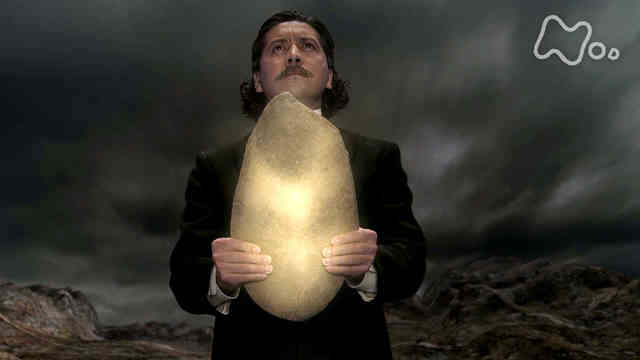
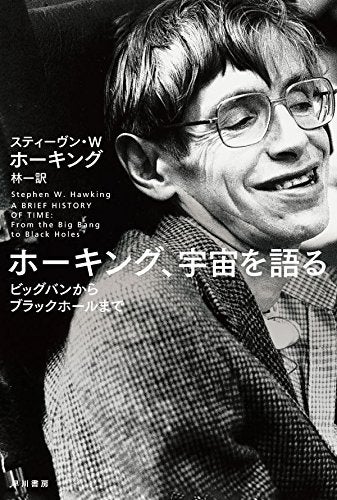






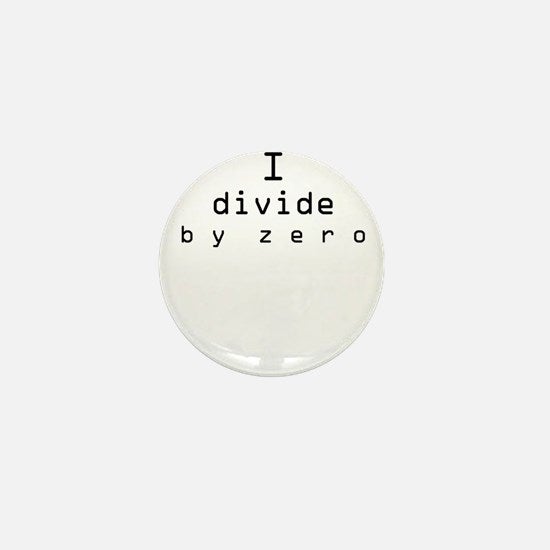




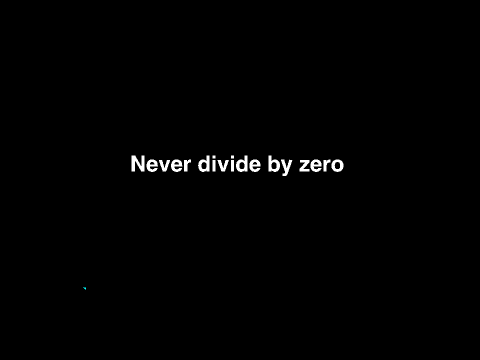







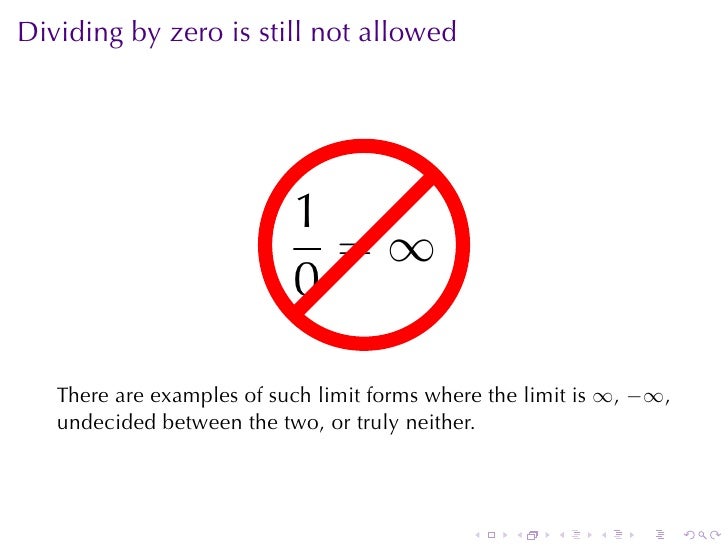










0 件のコメント:
コメントを投稿